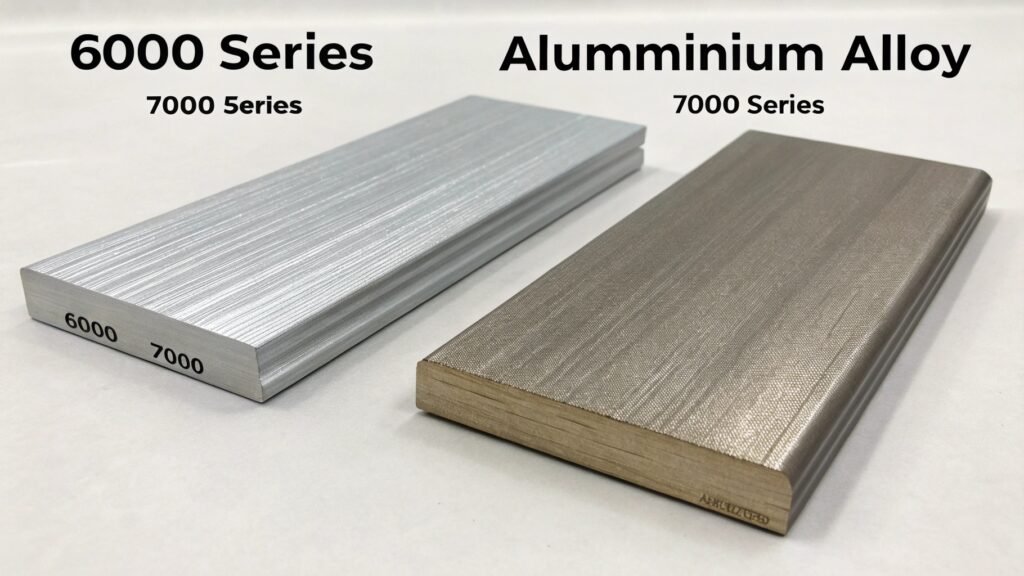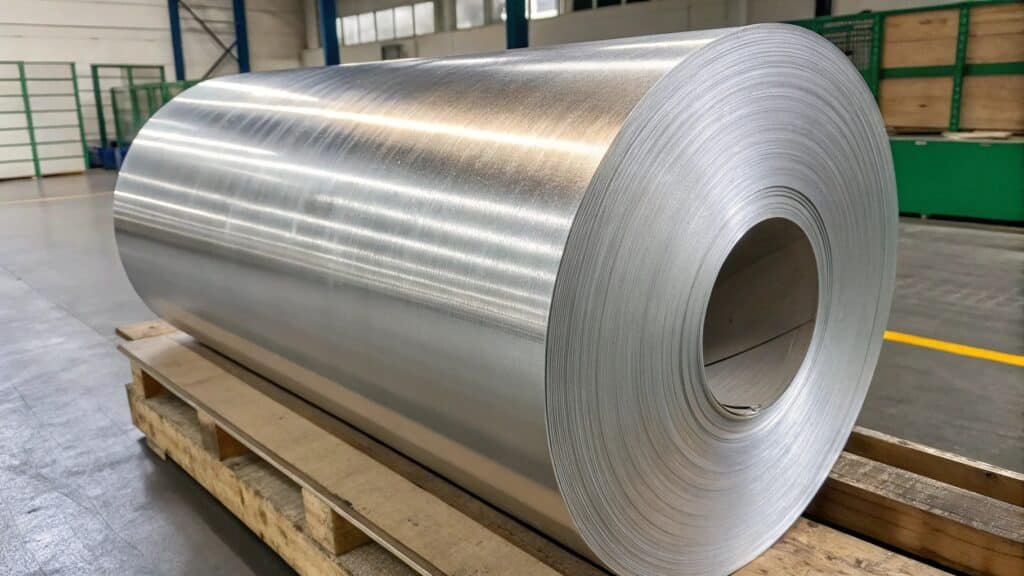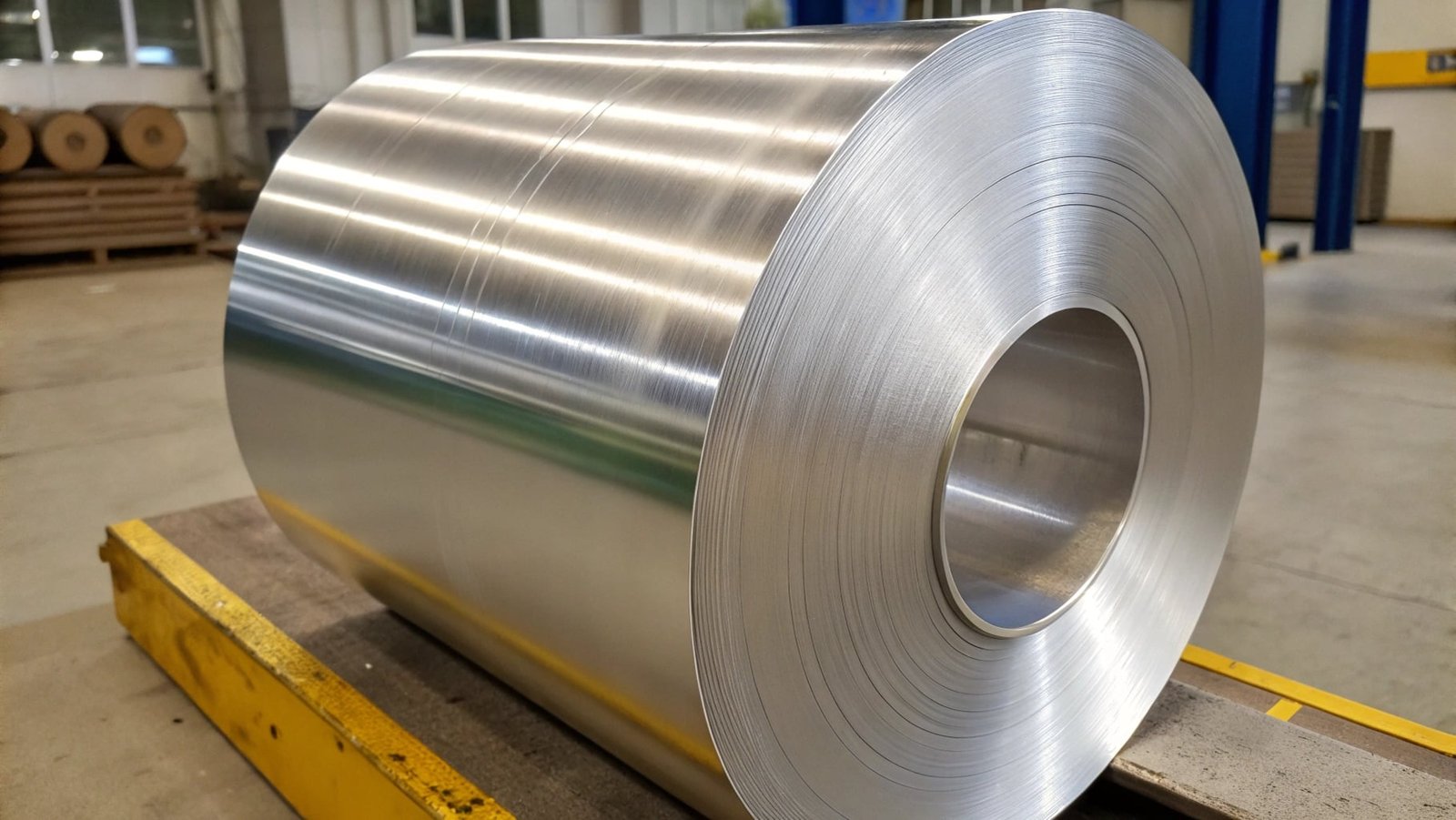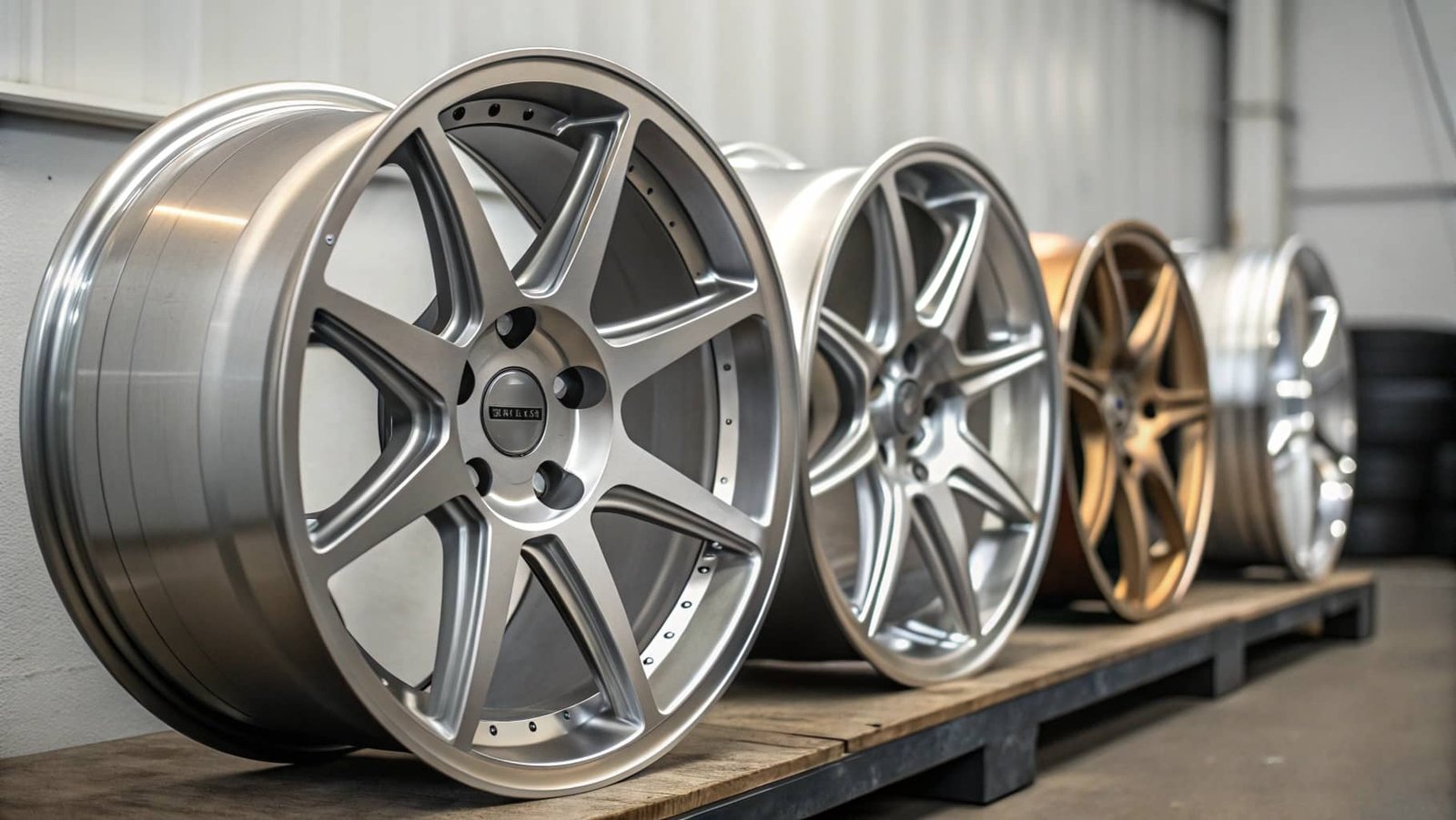Confused by 7xxx aluminum? Its strength is legendary, but what does it mean? This complexity can impact your high-stress component choices. We'll explain it clearly.
A 7xxx series aluminum alloy is an aluminum alloy where zinc is the primary alloying element, often with magnesium and copper. These alloys are known for their exceptionally high strength.
At SWA Forging, we get many questions about high-strength materials for demanding applications. These applications are common in aerospace or heavy machinery. The 7xxx series is often a top contender. We started our journey in Suzhou, China, back in 2012. Since then, we've specialized in manufacturing and exporting customized aluminum alloy solutions. Our large-diameter forged rings and forged discs often use these high-performance alloys. Understanding this series is crucial for our clients. These clients are mainly traders and machining companies in the Middle East. They need to ensure they are selecting the best material for critical parts. Let's dive into what makes this series so special and capable.
What does 7000 series aluminum mean?
Wondering about "7000 series aluminum1"? This term signifies top-tier strength in alloys. Not knowing this could mean missing out on optimal material performance. We'll define it.
7000 series aluminum means it belongs to a family of aluminum alloys where zinc is the main added element. These alloys are heat-treatable and achieve the highest strengths among aluminum alloys.
When we talk about aluminum alloys, we often use a numbering system. This system helps us categorize them. The "7000 series" specifically tells us about the main ingredients mixed with the aluminum. The first digit, '7', is the key here. It means that zinc is the principal alloying element in this group. Think of it like a recipe; zinc is the star ingredient that gives these alloys their most famous characteristic: very high strength.
Of course, it's rarely just zinc. Other elements like magnesium and copper are also frequently added in smaller amounts. These additions help to further refine the properties. For example, magnesium helps to increase strength. Copper can also increase strength and allow the alloy to respond well to heat treatment. This heat treatability is another vital feature of the 7000 series. It means we can significantly boost their strength after they've been formed or forged into a shape, like our forged rings and discs. This process unlocks their full potential, making them suitable for parts that have to withstand a lot of stress. Many of our clients in the automotive and aerospace industries rely on these alloys for this reason.
What is the difference between 6000 series and 7000 series aluminum?
Choosing between 6000 and 7000 series aluminum? This common dilemma can be tricky. Making the wrong choice affects cost and performance. Let's compare them simply.
The main difference is strength and primary alloying elements. 7000 series (zinc-based) offers much higher strength than 6000 series (magnesium-silicon based), but 6000 series often has better formability and corrosion resistance.
As a manufacturer of customized aluminum alloy solutions, we at SWA Forging frequently guide our clients through selecting the right alloy series. Both the 6000 and 7000 series are popular, but they serve different needs.
Key Differences Explained
The most significant difference lies in their composition and the resulting properties.
- Primary Alloying Elements: The 6000 series alloys primarily use magnesium and silicon. A common example is 6061 alloy. The 7000 series, as we've discussed, uses zinc as its main partner, often with magnesium and copper. Alloy 7075 is a prime example here.
- Strength: This is a big one. 7000 series alloys are the champions of strength in the aluminum world. They can achieve strengths comparable to some steels. 6000 series alloys offer good to high strength, very respectable for many uses, but generally not as high as the 7000 series.
- Corrosion Resistance: Generally, 6000 series alloys have excellent corrosion resistance. 7000 series alloys can also have good corrosion resistance, but some high-strength variants can be more prone to stress corrosion cracking (SCC) if not carefully selected for the right temper or protected.
- Weldability: 6000 series alloys are usually easier to weld. Welding 7000 series alloys can be more challenging and may require special techniques and filler materials.
- Formability: 6000 series alloys tend to be more easily formed into complex shapes. The high strength of 7000 series alloys can make them a bit less formable.
Here's a simple table to summarize:
| Feature | 6000 Series (e.g., 6061) | 7000 Series (e.g., 7075) |
|---|---|---|
| Primary Alloying Elements | Magnesium (Mg), Silicon (Si) | Zinc (Zn), often with Magnesium (Mg), Copper (Cu) |
| Strength | Good to High | Very High to Extremely High |
| Corrosion Resistance | Excellent | Good (can be susceptible to SCC if not managed) |
| Weldability | Good to Excellent | Fair to Poor (requires special techniques) |
| Formability | Good | Fair |
| Machinability | Good | Good (can produce small chips) |
| Cost | Moderate | Higher |
| Common Applications | Structural, architectural, general purpose. We forge many 6061 rings. | Aerospace, military, high-performance sports. Our 7075 discs are popular here. |
Our trader clients often need a range of alloys, including both series, to meet diverse market demands. Machining customers will notice differences in how these alloys behave during cutting. We provide quality certificates and can arrange third-party certifications (SGS, BV, TUV) for both, ensuring they meet stringent standards.
What is the benefit of 7000 series aluminum?
Seeking maximum strength without heavy weight? The 7000 series aluminum offers just that. Not using it could mean over-engineered, heavier parts. Discover its key advantages.
The primary benefit of 7000 series aluminum is its outstanding strength-to-weight ratio. It provides strength comparable to some steels but at a significantly lower density, ideal for high-performance applications.
The 7000 series aluminum alloys are highly valued in many industries for several compelling reasons. At SWA Forging, when a client needs the utmost performance from an aluminum component, we often discuss the benefits of this series.
Unpacking the Advantages
- Exceptional Strength-to-Weight Ratio: This is the standout feature. These alloys are incredibly strong for how light they are. Aluminum itself is about one-third the weight of steel. The 7000 series pushes the strength of aluminum to levels that can compete with, or even exceed, some grades of steel. This means you can design parts that are just as strong but much lighter. This is critical in aerospace, where every kilogram saved matters, and in performance automotive parts.
- High Yield and Tensile Strength: "Yield strength" is the point at which the material starts to permanently deform. "Tensile strength" is the maximum stress it can handle before breaking. 7000 series alloys boast very high numbers for both. This means components made from them can withstand significant forces without failing or losing their shape. Our large-diameter forged rings and discs made from 7xxx alloys for industrial machinery benefit greatly from this.
- Good Fatigue Strength: Many parts in machines or vehicles experience repeated loading and unloading cycles. Fatigue strength measures how well a material can endure these cycles. 7000 series alloys generally have good fatigue properties, making them durable for such applications.
- Heat Treatability: As mentioned, these alloys can be heat-treated. This allows us to tailor their final mechanical properties after the forging process. We can optimize them for maximum strength or for better resistance to certain types of corrosion, depending on the specific application.
For our machining customers, while these alloys are very strong, they generally offer good machinability, especially in certain tempers. This means they can be precisely shaped into complex components.
What does 7075 mean in aluminum?
Heard of "7075 aluminum" specifically? This alloy is a star in the 7000 series. Not knowing its specific makeup means missing its unique advantages. Let's decode it.
7075 is a specific aluminum alloy within the 7000 series. Its main alloying elements are zinc, magnesium, and copper. It is one of the highest-strength aluminum alloys available.
Within the broad 7000 series, 7075 is one of the most well-known and widely used alloys. It's a real workhorse when extreme strength is needed. At SWA Forging, 7075 is a common material for our high-performance forged rings and discs.
Breaking Down 7075
The designation "7075" tells us it's in the 7xxx family (zinc as the main alloying element), and the "075" part identifies this specific chemical composition.
- Key Alloying Elements in 7075:
- Zinc (Zn): Typically around 5.1% to 6.1%. This is the primary element responsible for its high strength.
- Magnesium (Mg): Usually about 2.1% to 2.9%. Magnesium further contributes to strength.
- Copper (Cu): Around 1.2% to 2.0%. Copper also adds strength and allows the alloy to respond well to heat treatment.
- Chromium (Cr): A small amount (around 0.18% to 0.28%) is usually added. Chromium helps to control the grain structure and improve resistance to stress corrosion cracking.
Properties and Tempers of 7075
7075 aluminum is famous for its excellent mechanical properties, especially its very high strength after heat treatment.
- Common Tempers: The "temper" tells us about the heat treatment process it has undergone.
- 7075-T6 (or T651): This temper is solution heat-treated and then artificially aged. It offers the highest strength levels for 7075. However, it can be more susceptible to stress corrosion cracking in certain environments.
- 7075-T73 (or T7351): This temper is "overaged." It involves a special aging process that results in slightly lower strength than T6. But, it offers significantly better resistance to stress corrosion cracking. This makes it a preferred choice for many critical aerospace applications where safety and long-term reliability are vital.
- 7075-T76 (or T7651): This temper provides a balance. It has better exfoliation corrosion resistance than T6 and better strength than T73.
Applications for 7075 are widespread in high-stress environments. You'll find it in aircraft structural parts like wing spars and fuselage frames, military hardware, high-end bicycle components, rock climbing gear, and even molds for the plastics industry. We ensure all our 7075 products meet strict international standards, providing product quality certificates and options for third-party inspection like SGS, BV, or TUV.
Conclusion
The 7xxx series, especially 7075, offers top-tier strength for critical uses. Understanding its properties helps select the best high-performance aluminum alloy for demanding projects.
-
Explore this link to understand the unique properties and applications of 7000 series aluminum, crucial for high-performance industries. ↩










